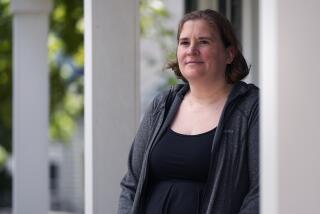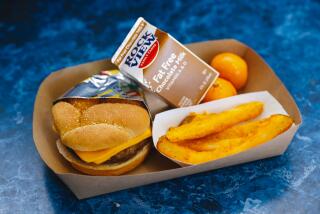School Lunches
- Share via
* Once again the public turns the spotlight on schools to find an explanation for what ails society. School lunches contain too much fat, sodium and sugar and, therefore, our children’s health is at risk (Oct. 26). Not only is that too simple, it’s simplistic.
To begin with, for many of the children who participate in the school lunch program it is not only their best chance for a nutritious meal, it is their only one. The extra calories from fat may be the only way that they have to consume enough energy to survive. While some children may pick at their school lunch knowing that they have many more opportunities to eat at home during the rest of the day, for too many they will see little or no more until they come to school for breakfast the next morning. They need the extra calories.
None of my colleagues in the school food service industry would argue that nutrition is not a critical component of childhood health. Most of us are trying to improve the quality of the meals we offer our children. The operative word here is offer. We can put the most nutritious foods available on a child’s lunch tray, but the child makes the decision to eat his/her lunch or not. Choice is one of the biggest changes in school cafeterias in recent years. The issue then becomes one of education not menu planning. Teaching children to make good, healthy choices and parents to reinforce good eating habits is where the emphasis belongs.
The same government that is decrying high fat in school lunches still requires that whole milk be available to children everyday. It is the same government that pushed millions of pounds of high fat, high sodium cheese into the school lunch program. Their current ideal of adding more fresh fruit but keeping costs down by serving bruised or rejected fruit treats children as if they are second class citizens who can’t tell the difference.
It’s time for the policy makers to come out of their offices and spend some time in the lunch rooms. Sitting in a school auditorium listening to testimony from people is fine, but the real world is standing next to a cafeteria worker for several days and talking to the kids. It’s time to check in with reality.
BARRY SACKIN
Director, Food Services
Anaheim Union High School District
President-Elect
Southern Calif. School Food Service Assn.
More to Read
Sign up for Essential California
The most important California stories and recommendations in your inbox every morning.
You may occasionally receive promotional content from the Los Angeles Times.













